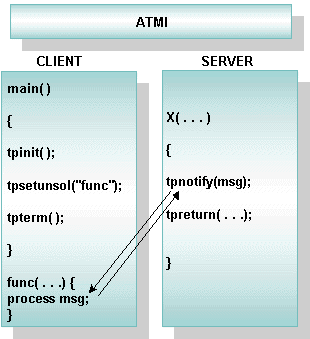


|

|
|
|
|
Using Unsolicited Notification
To enable unsolicited notification, a BEA Tuxedo ATMI client creates an unsolicited message handle using the tpsetunsol() function. To send an unsolicited message, a BEA Tuxedo client or server can use either the tpnotify() function, to send a message to a single client, or the tpbroadcast() function, to send a message to multiple clients at the same time. When a client receives a message, the BEA Tuxedo system calls the client's unsolicited handler function.
In a signal-based system, a client does not have to poll for unsolicited messages. However, in a non-signal based system, a client must check for unsolicited messages using the tpchkunsol() function. Whenever a client makes a service request, tpchkunsol() is called implicitly.
Handling Unsolicited Notification
Note: If you call tpnotify() with the tpack flag bit set, you will receive an acknowledgement of your request. See Also

|

|
|
|
|
Copyright © 2001 BEA Systems, Inc. All rights reserved.
|